Wave energy in Mutriku
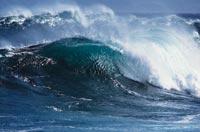
So far, several systems of transformation of the kinetic energy and potential of the waves into electric energy have been invented: wave converters, fixed and floating, anchored in the seabed and settled on the coast.
In open sea the energy of the waves is between 3 and 8 times greater than in coast. In this sense, the use of waves in open sea may be the most appropriate, but the cost of bringing electricity from sea to land is very high, so most of the invented systems are to be located on the coast itself or by the coast.
The municipality of Mutriku has been chosen to locate the first power generation plant by exploiting the energy of the sea waves in the Basque Country. Specifically, the new facility will be located outside the new Mutriku port protection dam. The Department of Transport and Public Works of the Basque Government will be responsible for the civil works of the installation and the Basque Energy Agency (EVE) of the energy facility.
A power of 480 kW will be installed. Therefore, approximately 970 MWh of energy will be generated annually, enough to supply electricity to approximately 1,000 people for a year. All electricity generated will be sold to the electricity distribution network. From an environmental point of view, the implementation of this project will prevent the emission into the atmosphere of a thousand tons of CO 2 a year, an amount that would occur from a thousand tons of CO 2 if fossil energy sources were used.
However, in Mutriku there are those who do not see with good eyes that it is built. Mutriku's natural group, for example, is against the project. In fact, the dam has a width of 432 m and a height of 16 m, which would imply, among other things, the disappearance of the beach of the town and the loss of the presence near the sea forever. According to the Natur group approximately 246,932 m 2 of sea would become cement areas.
Special installation
The system chosen for the installation of energy in the protection dam of the port of Mutriku presents several particularities. The technology used consists of an oscillating water column converter (OWC, oscilating water column). This is the most developed or mature technology currently for the energy use of waves. The multi-turbine configuration has been selected, with 16 units for the chamber turbine, with the aim of improving the integration of the installation in the dam.
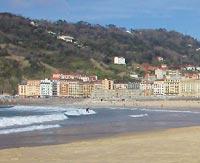
The operation of installations using the OWC system or technology is very complex and has no impact on the environment. When the wave arrives, the water column rises inside the chambers and, after compressing the air inside, the compressed air comes out under great pressure through a small hole located at the top. This compressed air that comes out at high pressure and speed affects the turbines and makes it turn. Therefore, compressed air acts on turbines and not directly on sea water. Thus, the electric generators associated with the turbines produce electric energy. When the water column drops, the chamber becomes empty, air is absorbed through the hole at the top, which affects the turbines again. Due to the design of these turbines, both when they absorb air and when they eject air, the turbines turn in the same direction.
There are two plants in the world that use this technology to exploit the energy of the waves, one in Scotland and one in the Azores Islands. However, the Mutriku plant will have more than one turbine. It will also be the first installation to be fully integrated into a new dam. Although the use of open sea waves is energetically more cost-effective, wave converters of this type located on the coast present an advantage over open sea systems: the electric generator, turbine and electrical equipment are on land, so their repair and maintenance are much cheaper. On the other hand, its impact on the environment must be taken into account, among others, the landscape impact.
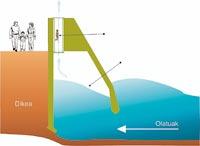
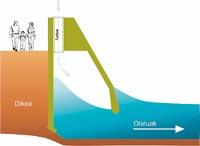
Marine energy
Energy from the sea can be obtained in various ways, depending on how energy is collected or stored. In this way, marine energy can be used by tidal energy, oceanic thermal energy, marine currents and waves. Numerous techniques are being developed for each of these farms.

In the Basque Country there are no facilities for the use of marine energy. In addition, it must be taken into account that the possibilities or potentials are very different depending on the type of exploitation. Using the technology currently available, the possibilities of using ocean thermal energy, tides and the energy of marine currents are scarce.
The installation of this type of facilities requires minimal conditions and the Basque coast meets those necessary for the use of the waves. The average differences between folding and lowering on our coasts are less than 5 meters per year and have an energy flow close to 30 kW/m. Consequently, the energy use of waves is viable in the ACBC through OWC technology.
They announce its launch in 2007. As for the objectives set in the field of energy infrastructures, it is expected that by 2010 the installed power will be 5 MW.

In fact, surfers have been the only ones who have actually used the energy of the waves so far, but in recent years the sessions are multiplying and, although they are still incipient projects, the profitability limit is getting closer and closer.
Tidal energyThe technology to obtain electric energy from the energy of the tides is not the current one, it was invented long ago. However, so far it has not been possible to develop properly since it has not been able to take advantage of profitability and environmental problems. Until recently the most selected places for the use of tidal energy have been estuaries, in which a large volume of water flows through a narrow space, leading to high speed currents. In these cases a dam is built at the entrance of the estuary and the access to the beginning of the pleamar is closed. Consequently, in the sea area of the dam the water level increases compared to that of the other party. In the last two hours of the tide the ports are opened and the sea water is directed towards the estuary through the turbines, generating electricity. At the peak of the tide, the ports are closed again, leaving the water accumulated in the estuary during the tide drop in the sea. At the end of the low tide the ports open and the water flows from the estuary to the sea, the turbines move and is generated again electric energy. 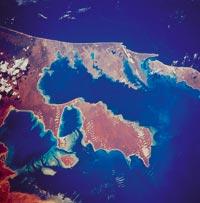 The system is technologically satisfactory but has been ruled out due to the serious environmental problems it generates. This is due, among other things, to the deterioration of estuary habitat due to this type of plant. Based on similar technology, but in order to avoid environmental problems, another system, the ponds, has been developed. At high tide the pond is filled with water and the water is accumulated when the tide drops. At low tide the water of the pond and that of the sea are not at the same level and, with open ports, the water of the pond is poured into the sea through the turbines. Electricity is generated here. Once emptied, the water of the pond and the sea water remain at the same level. Access to the raft is then closed. Thus, when the tide rises, the water of the sea and that of the pond are again at different levels. The valves are opened and seawater enters the raft through the turbines, generating electricity. When the pond is filled the cycle restarts. |
Buletina
Bidali zure helbide elektronikoa eta jaso asteroko buletina zure sarrera-ontzian











